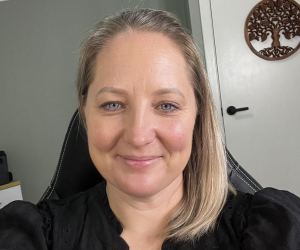Many parents don’t realise the impact a phone or device can have on their child’s safety and development before handing one over.
Not because they don’t care but because the potential risks are not always obvious. Parents often don’t realise how quickly a child can stumble into unsafe online spaces. With that in mind, here are five essential conversations every caregiver should have with their child before giving them a phone.
Here are 5 conversations we believe all caregivers should have with their children BEFORE gifting or giving them a phone of their own.
I firmly believe, based on my experience as a detective and child abuse investigator, that if you can’t have these conversations with your child or don’t think they’re old enough to understand them, then they’re not ready for a phone.
-
Protective Behaviours
Protective Behaviours (PB) education is the cornerstone of child abuse prevention. Children should be introduced to these concepts from as young as two years old and certainly before they receive a phone.
PB education helps children:
✅ Recognise appropriate vs inappropriate behaviours, both in person and online.
✅ Identify when they feel unsafe and know who they can turn to for help.
✅ Understand the difference between secrets and surprises—and why some secrets aren’t safe to keep.
Encourage your child to come to you if they ever feel uncomfortable or unsafe online. To learn more, search Protective Behaviours courses online or visit the ‘Helpful Links’ section of our website.
-
Sex
Before a child gets a phone, they need to understand that sexually explicit content exists online. Without prior discussion, they may be caught off guard or misinterpret what they see.
Talking about sex shouldn’t be taboo. Research shows that when parents have open and honest conversations about sex, children tend to make more informed and responsible choices.
Discussing sex in age-appropriate ways can help children:
- Feel comfortable asking questions instead of seeking answers online.
- Understand that much of what they may see online is not realistic or healthy.
- Learn to recognise inappropriate behaviour and how to respond.
If you’re unsure how to start this conversation, there are plenty of resources available to guide age-appropriate discussions.
-
Sexting
During a recent school presentation, a student told me, “Sexting is this generation’s way of flirting.” Whether we like it or not, the pressure to send and receive explicit images is huge for young people.
The Australian Federal Police (AFP) has reported a 400% increase in self-produced child sexual abuse material (CSAM) since COVID began. Even children as young as 8 or 9 have been caught in this trend, often due to a lack of awareness.
To help prevent this, educate your child about:
- The risks of sharing explicit images and the lack of control once a photo is sent.
- How peer pressure plays a role in sexting and ways to say no.
- Why online groomers target young people and how to spot the warning signs.
Set clear family boundaries about photo-sharing and encourage open discussions so your child feels comfortable coming to you if they’re ever pressured.
-
Consent
Consent is not discussed nearly enough today because many of us weren’t taught its true definition, meaning, or the legal ramifications behind it. However, in today’s world, understanding consent is essential, especially in relation to phones and digital communication.
While some aspects of consent are covered under protective behaviours, the need for deeper discussions and education around consent in the digital age is imperative. Consent isn’t just about sex—it extends to everyday interactions, particularly online. Young people need to understand when and how to ask for consent in various situations, including:
- Taking a photo or video of someone or something. Asking for consent before capturing images of a person, their home, or business is respectful.
- Posting or sharing someone’s image or video. Seeking permission encourages critical thinking about appropriate and inappropriate online behaviour.
- Forwarding or sharing a private message. Consent should always be obtained before sharing messages intended to remain private.
Consent is a crucial conversation that needs to happen. It shapes the way we navigate privacy, digital etiquette, and respectful interactions, both online and offline.
-
Pornography
If you don’t talk to your child about pornography, the internet will—and it won’t be in a safe or healthy way.
The average age of first exposure to pornography is 8 years old, but children as young as 2 or 3 have unintentionally come across it. One simple search can expose them to billions of videos, often without warning.
The conversation doesn’t have to be uncomfortable. Keep it simple:
- “Pornography is like a movie—actors are playing a role.”
- “It often portrays people being hurt or treated badly, but that’s not what real relationships look like.”
- “It’s not made for kids, and if you ever see something that makes you feel uneasy, come talk to me.”
Reassure your child that they’re not in trouble if they come across pornography. Encourage them to close the screen and tell an adult if they see something inappropriate.
Final Thoughts
Having these conversations before giving your child a phone will help them navigate the digital world with awareness, confidence, and resilience. You’re not just setting rules—you’re equipping them with the knowledge to protect themselves and make safe choices.
If you’re unsure where to start, look for Protective Behaviours courses or reach out to online safety experts for guidance. Let’s work together to keep our kids safe.
IMPORTANT: If you can’t have these conversations with your child, they aren’t ready for a mobile phone!
For more information on how to talk about these topics with your kids, check out our book, Operation KidSafe – a guide to child abuse prevention on our website www.cape-au.com. Use the code ‘kiddi10’ for a 10% discount exclusive to Kiddipedia subscribers.









